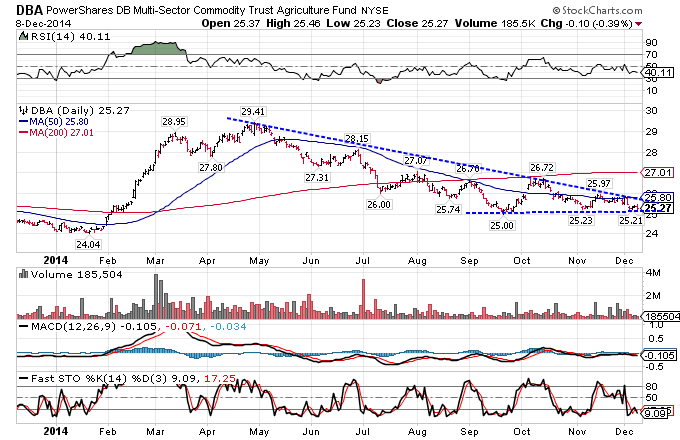Investopedia Commodities The Portfolio Hedge
Post on: 19 Апрель, 2015 No Comment

Research these Stocks on Kapitall’s Playground Now
By Steven Merkel, Investopedia: Most people picture a trading floor at a futures exchange as a scene of utter chaos, with fierce shouting matches, frantic hand signals and high-strung traders jockeying to get their orders executed; their picture is not far off. These markets are the meeting places of buyers and sellers of an ever-expanding list of commodities that today includes not only agricultural goods, metals and petroleum, but also products such as financial instruments, foreign currencies and stock indexes that trade on a commodity exchange.
At the center of this supposed disorder are products that offer a haven of sorts a hedge against inflation. Because commodities prices usually rise when inflation is accelerating, they offer protection from the effects of inflation. Few assets benefit from rising inflation, particularly unexpected inflation, but commodities usually do. As demand for goods and services increases, the price of goods and services usually rises too, as does the price of the commodities used to produce those goods and services. Futures markets are then used as continuous auction markets and as clearing houses for the latest information on supply and demand.
How Commodities Are Traded
Trading futures is the purest way to invest in commodities. To trade commodities. an individual trading account can be opened either directly with a futures commission merchant or indirectly through an introducing broker. Another way to trade commodities is through a managed account. where you give someone a written power of attorney to make and execute decisions about what and when to trade. They will have discretionary authority to buy or sell for your account or will contact you for approval to make trades, or you can hire a commodity trading advisor for a fee. Lastly, ever increasingly popular methods of diversified investing in commodities include commodity pools (limited partnerships ) or commodity-related mutual funds .Benchmarks for Broad Commodity Investing
Two of the most common commodity indexes are the Goldman Sachs Commodities Index (GSCI) and the Dow Jones-USB Commodity Index (DJ-USBCI).The GSCI is a composite index of commodity sector returns, representing an un-leveraged. long-only investment in commodity futures that is broadly diversified across the spectrum of commodities. The quantity of each commodity in the index is determined by the average quantity of production in the last five years of available data. When used as an economic indicator, this index will assign a weighting to each commodity in proportion to the amount of that commodity flowing through the economy.

The DJ-USBCI is designed to be a highly liquid index that represents fairly the importance of a diversified group of commodities to the world economy. To avoid overexposure of a particular commodity, the index does not allow any related group of commodities (e.g. energy, precious metals or grains) to make up more than 33% of the index. This forbids a disproportionate weighting of any particular commodity or sector which could negate the concept of a broad-based commodity index and thereby increase volatility.
The major distinction between the two indexes is that the GSCI uses a strategy of overweighting the appropriate commodity sector (e.g. energy, metal or agriculture) based on economic demand. The DJ-USBCI on the other hand relies on both production and liquidity in determining weightings but has stricter guidelines on the maximum percentages allowed in one particular sector.
Why Commodities Add Value
Commodities tend to bear a low to negative correlation to traditional asset classes like stocks and bonds. A correlation coefficient is a number between -1 and 1 that measures the degree to which two variables are linearly related. If there is perfect linear relationship, youll have a correlation coefficient of 1. A positive correlation means that when one variable has a high (low) value, so does the other. If there is a perfect negative relationship between the two variables, youll have a correlation coefficient of -1. A negative correlation means that when one variable has a low (high) value, the other will have a high (low) value. A correlation coefficient of 0 means that there is no linear relationship between the variables.Typically, U.S. equities whether in the form of stocks or mutual funds are closely related to each other and tend to have positive correlation with one another. Commodities, on the other hand, are a bet on unexpected inflation and they have a low to negative correlation to other asset classes.














